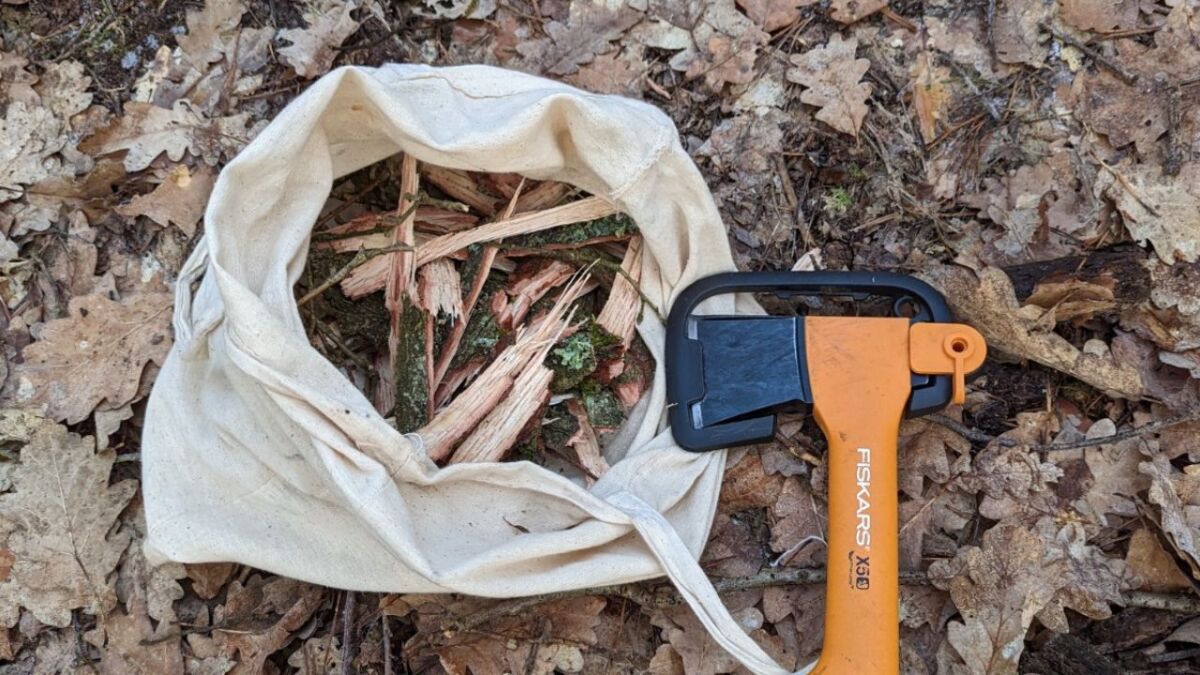
The 11 best trees for tanning leather
👉 The key facts from this guide
- Oaks, spruces, beeches, chestnuts, willows, birches, alders, walnut trees, black pines, chestnut oaks, and hemlock firs are the best trees for tanning leather as their bark contains tannic acid.
- Oak bark contains 6-10% tannin acid and has been used for centuries for tanning leather.
- Spruce bark contains about 3-5% tannin acid and is often used in papermaking, but can also be used for tanning.
- Beech bark contains about 4-7% tannin acid and is also used for tanning leather.
- Chestnut bark contains about 8-10% tannin acid and is typically used as an alternative to oak bark.
- The bark of the alder contains about 10-15% tannin acid and is often used for leather production and dyeing of textiles.
You have this wonderful piece of animal skin that you want to turn into beautiful leather, but somehow you still lack the right tanning agent source?
I had the same problem - over and over again, until I finally did some research. And trust me, it wasn't that easy!
If you, like me, are passionate about being in the wilderness and have made bushcraft, survival, and nature craft your way of life, then you know that tanning leather is an important skill.
Sometimes, though, it can be quite frustrating to find the right trees for tanning leather. But don't worry, I have the solution for both of us!
I have searched for and found the best trees for tanning leather. And trust me, this list will make your life easier.
With it, you can transform your animal skin into a wonderful piece of leather without constantly wondering if you have found the right tree. And the best part: you and I will be even more connected to nature as we perfect our craft! Let's discover the forest together and master this outstanding skill!
The different trees that provide us with bark for tanning
In leather production, tannin acid is often used to transform animal hides into leather.
It looks something like this:

There are many trees whose bark contains tannin acid and can therefore be used for leather tanning.
Here is the complete list:
- Oak: Oak bark has been used for centuries for leather tanning. It contains 6-10% tannin acid, making it one of the most effective types of bark. Oak bark comes from various species of the genus Quercus and is widespread in Europe and North America.
- Spruce: Spruce bark is typically used in paper production, but can also be used for leather tanning. It contains about 3-5% tannin acid and is thus less effective than oak bark. Spruce bark comes from various species of the genus Picea and is widespread in North America and Europe.
- Beech: Beech bark is also used for leather tanning. It contains about 4-7% tannin acid and is thus slightly less effective than oak bark. Beech bark comes from various species of the genus Fagus and is widespread in Europe and North America.
- Chestnut: Chestnut bark contains approximately 8-10% tannin acid and is often used as an alternative to oak bark. It comes from various species of the genus Castanea and is widespread in Europe and Asia.
- Willow: Willow bark contains about 6-8% tannin acid and is frequently used in the production of aspirin and other painkillers. Willow bark comes from various species of the genus Salix and is widespread in Europe, Asia, and North America.
- Birch: Birch bark contains about 1-2% tannin acid and is typically used in the production of furniture, paper, and baskets. It is also used in the production of birch tar, which was used in the Stone Age as an adhesive, sealant, and for weapon-making. Birchbark comes from various species of the genus Betula and is widespread in Europe, Asia, and North America.
- Alder: Alder bark contains about 10-15% tannin acid and is often used in the production of leather and dyeing textiles. It is also used in the production of tannin acid, tannin, and pharmaceutical products. Alder bark comes from various species of the genus Alnus and is widespread in Europe, Asia, and North America.
- Walnut: Walnut is a deciduous tree that is widespread in Europe, Asia, and North America. Its bark contains about 6-8% tannin acid and is used for leather tanning.
- Black pine: Black pine is a coniferous tree that originates from Southern Europe. It contains about 7-10% tannin acid.
- Chestnut: Chestnut is a deciduous tree that is widespread in Europe and Asia. Its bark contains about 5-7% tannin acid and is also used for leather tanning.
- Hemlock: Hemlock is a coniferous tree that originates from North America. Its bark contains about 6-8% tannin acid and is also used for leather tanning.
Why do we use bark for tanning? A small trip into the past.
You may be wondering why we use bark to tan leather and how this practice has developed throughout history.
Well, I'd be happy to explain it to you because it's an interesting and fascinating story that shows how much we humans depend on nature and how we know how to use it.

For millennia, people have used bark to tan leather. It is a process that has been practiced all over the world, from our ancestors in Europe to the indigenous peoples of the Americas to the tribes of Africa and Asia.
The bark of certain trees contains tannins, which are responsible for transforming animal hides into supple, durable and water-resistant leather.
But why bark? Well, there's a good reason for that. In nature, there are many sources of tannin, but trees have the advantage of being large, sturdy, and readily available.
In wooded areas in particular, bark was thus an ideal and easily accessible source of tannin. In addition, the tannins in the bark are particularly highly concentrated and are excellent for tanning leather.
Do you want to make a skin durable without tannins? Then watch my video, and you will learn how to make a deer hide durable with oil and egg yolk.
The history of the use of bark as a source of tannin dates back to ancient times. Even back then, our ancestors recognized the value of trees like oak, chestnut, and spruce for tanning leather.
In the Middle Ages, tanning leather became an important craft, and the use of bark as a tannin source became more sophisticated. Tanneries specializing in the processing of animal hides emerged in many cities and villages.
Today, in our modern world, there are many industrial methods and chemicals for tanning leather, but for us nature lovers, the traditional bark method is still the best choice.
It allows us to stay closely connected to nature and to cultivate a craft that has been passed down from generation to generation for millennia.
The use of bark for tanning leather is not only a practical solution, but also a piece of living history and an expression of our deep connection with nature.
By continuing to use bark for tanning leather, we honor the traditions of our ancestors and contribute to the preservation of this valuable knowledge.

Sources for the guide
https://www.lederpedia.de/wiki/Gerbstoffe_aus_Rinde_und_Bl%C3%A4ttern
https://de.wikipedia.org/wiki/Gerbmittel
https://de.wikipedia.org/wiki/Gerbstoffe
https://www.waldwissen.net/waldwirtschaft/waldbau/holzverwendung/nutzung-der-birkenrinde
https://de.wikipedia.org/wiki/Betula
https://www.natur-lexikon.com/Texte/MZ/003/00166-Erle/MZ00166-Erle.html
https://www.wildfind.com/pflanzen/baeume/erle/erlenrinde/
https://www.waldwissen.net/waldwirtschaft/waldbau/holznutzung/nicht-holzprodukte/tannine

Author of the guide
Martin Gebhardt
Hey, I'm Martin. On my blog, you will learn the basics and numerous details about living in the wild. I think survival, bushcraft and the good life in nature are the keys to happiness. Find me here on Instagram or on YouTube. You can find more about my mission on the About Me page.
Was this guide helpful?
18 people found this guide helpful.
5.00 out of 5 points (18 Ratings)
Comments (0)
This post may contain affiliate links. So if you click on the links and make a purchase, I will receive a small commission at no additional cost to you. Click here, to learn more about it.


